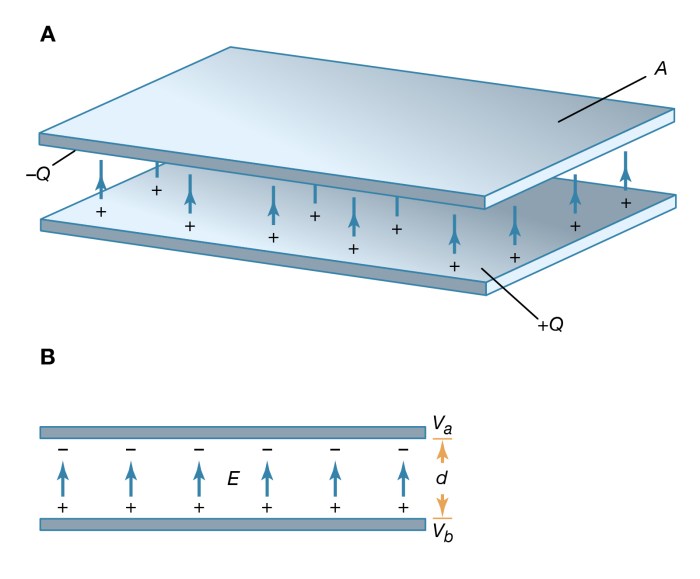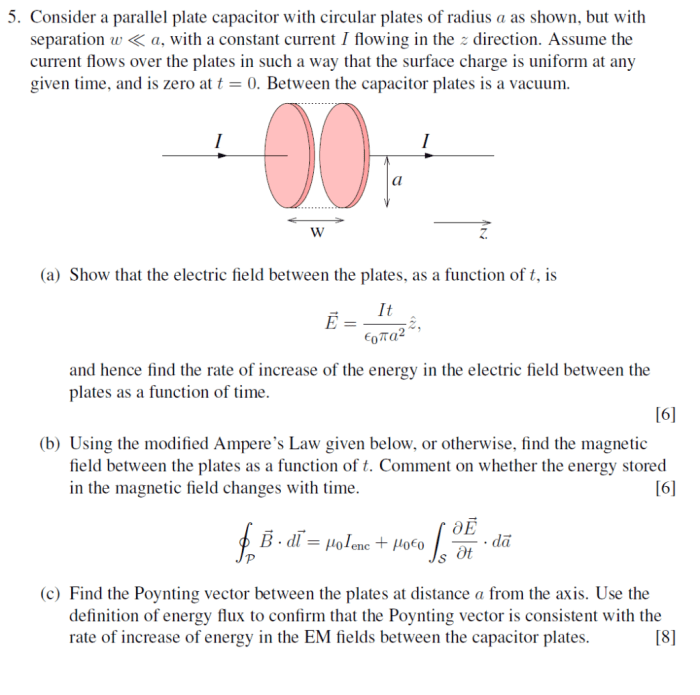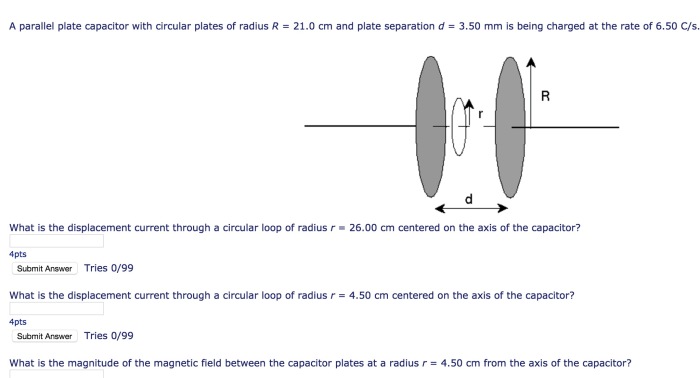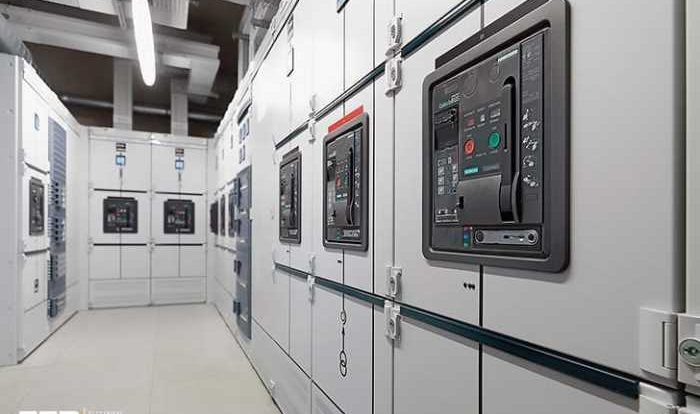A parallel plate capacitor with circular plates of radius stands as a cornerstone of electrical engineering, finding widespread applications in diverse realms. This analysis delves into the intricacies of its capacitance, electric field, potential, energy storage, and practical uses, providing a comprehensive understanding of this fundamental component.
The capacitance of a parallel plate capacitor with circular plates is a crucial parameter that determines its ability to store electrical charge. It is directly proportional to the plate area and inversely proportional to the separation distance between the plates.
The formula for calculating the capacitance of such a capacitor is derived from the basic principles of electrostatics.
Introduction

Parallel plate capacitors are widely used in electronic circuits and devices. They consist of two parallel conductive plates separated by an insulating material. The capacitance of a parallel plate capacitor depends on the area of the plates, the distance between them, and the permittivity of the insulating material.
In this article, we will analyze a parallel plate capacitor with circular plates of radius. We will derive the formula for its capacitance, electric field, potential difference, and energy stored.
Capacitance of a Parallel Plate Capacitor

The capacitance of a parallel plate capacitor is given by the formula:
$$C = \frac\epsilon Ad$$
where:
- C is the capacitance in farads (F)
- ε is the permittivity of the insulating material in farads per meter (F/m)
- A is the area of the plates in square meters (m^2)
- d is the distance between the plates in meters (m)
For a parallel plate capacitor with circular plates of radius r, the area of the plates is given by:
$$A = \pi r^2$$
Substituting this into the formula for capacitance, we get:
$$C = \frac\epsilon \pi r^2d$$
Electric Field and Potential
The electric field between the plates of a parallel plate capacitor is uniform and given by:
$$E = \fracVd$$
where:
- E is the electric field in volts per meter (V/m)
- V is the potential difference between the plates in volts (V)
- d is the distance between the plates in meters (m)
The potential difference between the plates is given by:
$$V = Ed$$
Energy Stored in the Capacitor, A parallel plate capacitor with circular plates of radius
The energy stored in a parallel plate capacitor is given by the formula:
$$U = \frac12CV^2$$
where:
- U is the energy stored in joules (J)
- C is the capacitance in farads (F)
- V is the potential difference between the plates in volts (V)
Substituting the formula for capacitance into the formula for energy stored, we get:
$$U = \frac12\frac\epsilon \pi r^2dV^2$$
Applications

Parallel plate capacitors with circular plates of radius are used in a wide variety of applications, including:
- Electronic circuits: Parallel plate capacitors are used in electronic circuits to store charge, filter out noise, and smooth out voltage fluctuations.
- Energy storage devices: Parallel plate capacitors are used in energy storage devices, such as supercapacitors, to store large amounts of energy.
- Sensors: Parallel plate capacitors are used in sensors to detect changes in pressure, temperature, and other physical quantities.
General Inquiries: A Parallel Plate Capacitor With Circular Plates Of Radius
What is the formula for calculating the capacitance of a parallel plate capacitor with circular plates?
C = (ε – A) / d, where C is capacitance, ε is permittivity, A is the plate area, and d is the separation distance.
How does the electric field vary between the plates of a parallel plate capacitor?
The electric field is uniform between the plates and is given by E = V / d, where E is the electric field, V is the potential difference, and d is the separation distance.
What is the energy stored in a parallel plate capacitor?
The energy stored in a parallel plate capacitor is given by W = (1/2) – C – V^2, where W is energy, C is capacitance, and V is the potential difference.

